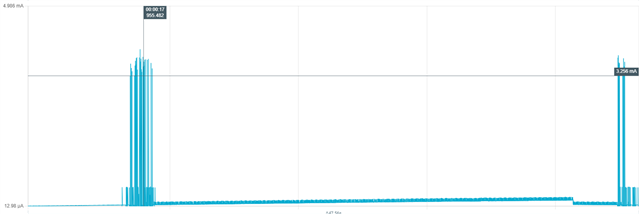Hello!
I was wondering what methods exist to optimize either the configuration or code to get the lowest power consumption with the nRF Connect SDK?
Before I used the nRF5 SDK and, with the ble_app_uart example, was able to get 2uA current by commenting everything out and running just:
int main(void)
{
for (;;)
{
idle_state_handle();
}
}
Now, with the nRF Connect SDK commenting everything out and just running the following:
void main(void)
{
for (;;)
{
k_sleep(K_FOREVER);
}
}
And instead I get current jumping back and forth from 2uA to 200uA
For the nRF Connect SDK I am using the same peripheral_uart with the prj_minimal.conf. Not sure if there are other methods to optimize power or prevent this unstable power issue.
Please let me know if I am missing anything!
Thanks!



